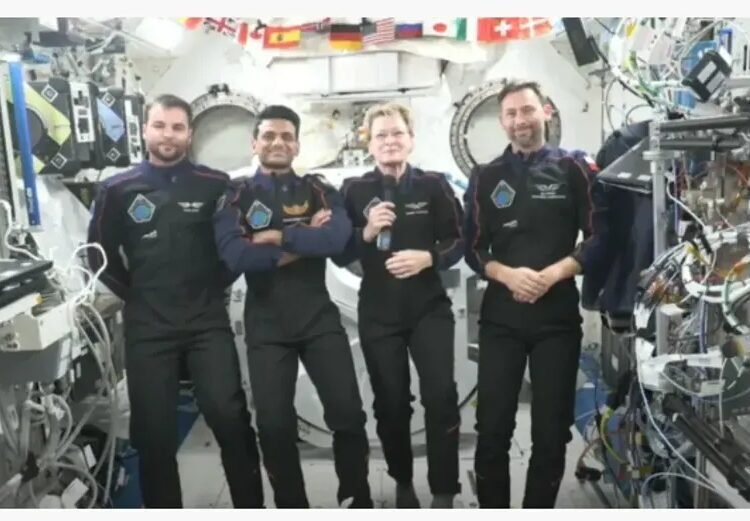Astronaut Shubhanshu Shukla came back to Earth after spending 18 days aboard the International Space Station. The SpaceX Dragon, transporting Shubhanshu Shukla and three others, landed in the water close to San Diego on Tuesday. Shukla’s comeback signifies a moment of pride for India, as the country commemorates its expanding involvement in global space exploration.
The capsule circled Earth multiple times, slowly positioning itself for the exact deorbit burn needed to aim for the specified splashdown area. The timing of this action was vital, as it guaranteed the spacecraft approached Earth’s atmosphere at the proper angle and place for a safe landing.
ALSO READ: Shubhanshu Shukla Returns: India’s Star Comes Home From Space!
Mission Overview
The mission took off on June 25, 2025, at 06:31 UTC from NASA’s Kennedy Space Center, Launch Complex 39A, aboard a SpaceX Falcon 9 rocket with the Crew Dragon capsule “Grace”. Docked with ISS on June 26, around 10:31 UTC; Shubhanshu officially entered the station at 12:14 UTC

Originally planned for 14 days, the mission extended to 18 days, totaling over 20 days, 2 hours, and 59 minutes in space. The crew included Commander Peggy Whitson (USA), Pilot Shubhanshu Shukla (India) and Mission Specialists Slawosz Uznański-Wisniewski (Poland, ESA) & Tibor Kapu (Hungary).
ALSO READ: Shubhanshu Shukla, Ax-4 Crew to Leave International Space Station on July 14: Axiom Confirms
Key Milestones in Subhanshu’s Journey
His involvement in this predominantly commercial and internationally cooperative mission is seen as a significant advancement in India’s human spaceflight endeavors and a crucial precursor to the nation’s forthcoming Gaganyaan mission.
- Throughout his time in orbit, Shukla engaged in various global scientific experiments spanning disciplines such as biology, materials science, and artificial intelligence.
- His participation in the Sprouts Project — which investigates plant growth in microgravity — offers potential benefits for sustainable agriculture in space.
- Alongside his groundbreaking scientific achievements, Shukla’s professional demeanor and dignified portrayal of India in space garnered significant attention and instilled national pride.
What it means for India?
Shubhanshu Shukla’s historic journey to the International Space Station (ISS) represents a giant leap not just for one individual, but for India’s aspirations in space exploration, scientific advancement, and global collaboration. As one of the few Indians to have reached low Earth orbit aboard the ISS, Shubhanshu’s mission marks a milestone that echoes far beyond the boundaries of science and technology.
ALSO READ: Analysis! Significance of Shubhanshu’s Reseach on Tardigrades in Space
India has long been a spacefaring nation, with ISRO (Indian Space Research Organisation) delivering groundbreaking missions like Chandrayaan, Mangalyaan, and the upcoming Gaganyaan crewed mission. However, Shubhanshu’s presence aboard the ISS reinforces India’s growing involvement in international space cooperation, especially in crewed missions—a realm traditionally dominated by NASA, Roscosmos, and ESA.
His participation showcases the readiness of Indian astronauts to integrate seamlessly with global space agencies and operate in demanding extraterrestrial environments. It also signals India’s credibility in producing world-class space professionals.













